
That's my laundry soap jar. Sadly, it is empty. I sent Emma downstairs last night to do some more of her giant pile of laundry, and she came back up very quickly, telling me in triumph, "I can't do laundry, there's no soap!" I could hear the cheering inside her head.
Well.
I have been mixing my own laundry soap for two years now, and it's great. I did the first batch in May 2013, and then a second batch in May 2014. The second time around, I left out the baking soda and made up the difference in volume with washing soda/borax, and couldn't tell that it made a speck of difference. Each of those 9-cup batches lasted us a year, so here we are in May again and it's laundry soap time.
This time around, though, I paused before buying a bar of Fels-Naptha. Soap... hmmm. I can MAKE that! Without fragrance or color or extra chemicals!
So I got out the lard and lye, and mixed up a quick batch of soap. The other soaps I've made were cold-process batches, where the mixture is not cooked but rather left to sit for 4-6 weeks after molding to allow the soap to harden and fully saponify.
Today, though, I needed to do laundry immediately and couldn't wait 4-6 weeks for curing. So I did this batch as hot-process.
Since this is for laundry soap, I also made this batch with 0% superfat, meaning that all the oil will react with the lye and no oil will be left over at the end. Normal people-washing soap is usually about 5% superfatted, since having a little un-reacted oil left over is a good thing. Superfatted soap isn't as harsh and drying, and feels better on your skin. However, you don't want a lot of free oil floating around in a load of laundry, so no superfatting on this batch.
Hot process soap starts out the same as cold process soap: mixing up the lye water and adding it to the liquid fat. I used 100% lard this time, since it's just for laundry and I didn't want a soap that will be really bubbly in the washing machine. I mixed with the stick blender until trace.
Then the difference comes in. Hot process soap is cooked to speed up the saponification. I put it in the crock pot, on low, and let it go until all the lye was reacted (about an hour). At the end, it sort of looks like Vaseline, translucent and silky.
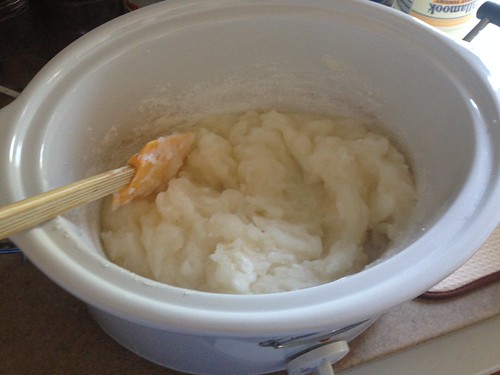
Then I put it in the mold and let it cool down for a couple hours.
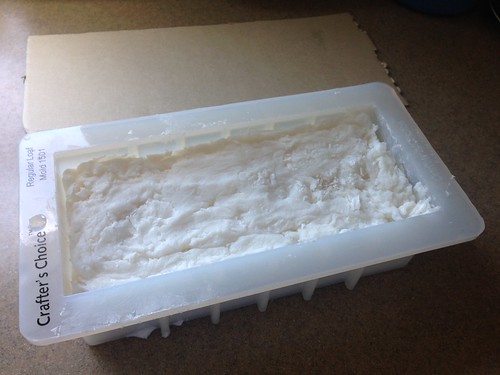
And then I cut it into bars. This was a two-pound batch, and I cut it into 6 bars of approximately 5.5 ounces each (the same as a bar of Fels-Naptha). Since this was made by hot-process, the soap is ready to use immediately! It's still good to let it sit for a while to harden, but the saponification is complete and it won't burn like a cold process soap that hasn't cured long enough.
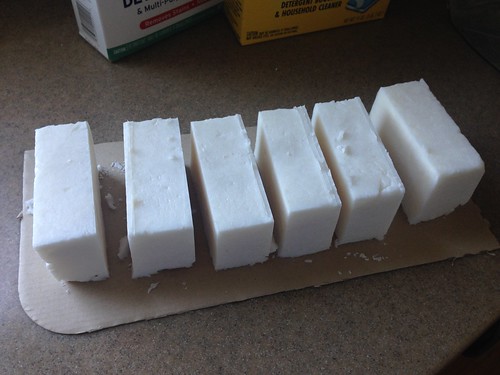
But this is for laundry, so I grated a bar and combined it with the washing soda and borax. And now I'm set for another year. Actually, I have enough soap for six years of laundry!
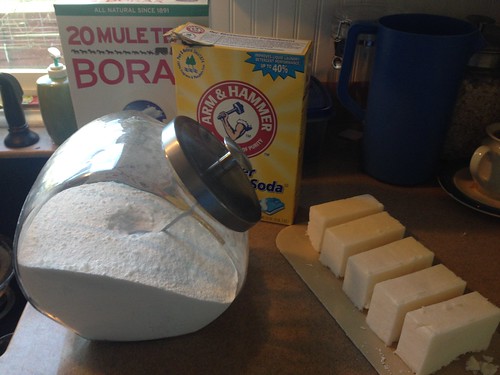
Each of my bars of laundry soap costs $1.54 (Fels-Naptha bar = $4.31). The total cost of this 9-cup batch of laundry soap is $4.41. That's about $0.03 per load of laundry.
I love being crafty.
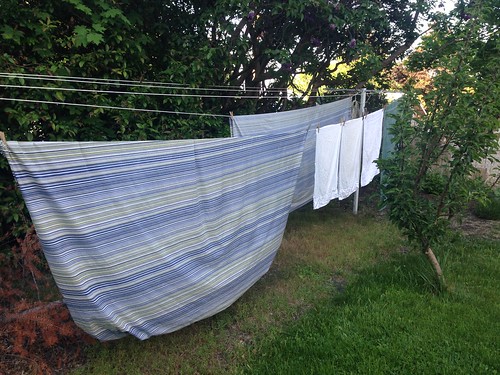

1 comment:
Well done! I will remember this post! I usually make soap on top of the woodstove during the winter months, but sometimes run out in the summer. I like your idea of using the crock pot! ps I've been rendering my own lard that comes from a neighbor's hogs.
So lots to use for soap, candles and pie crusts!
Post a Comment